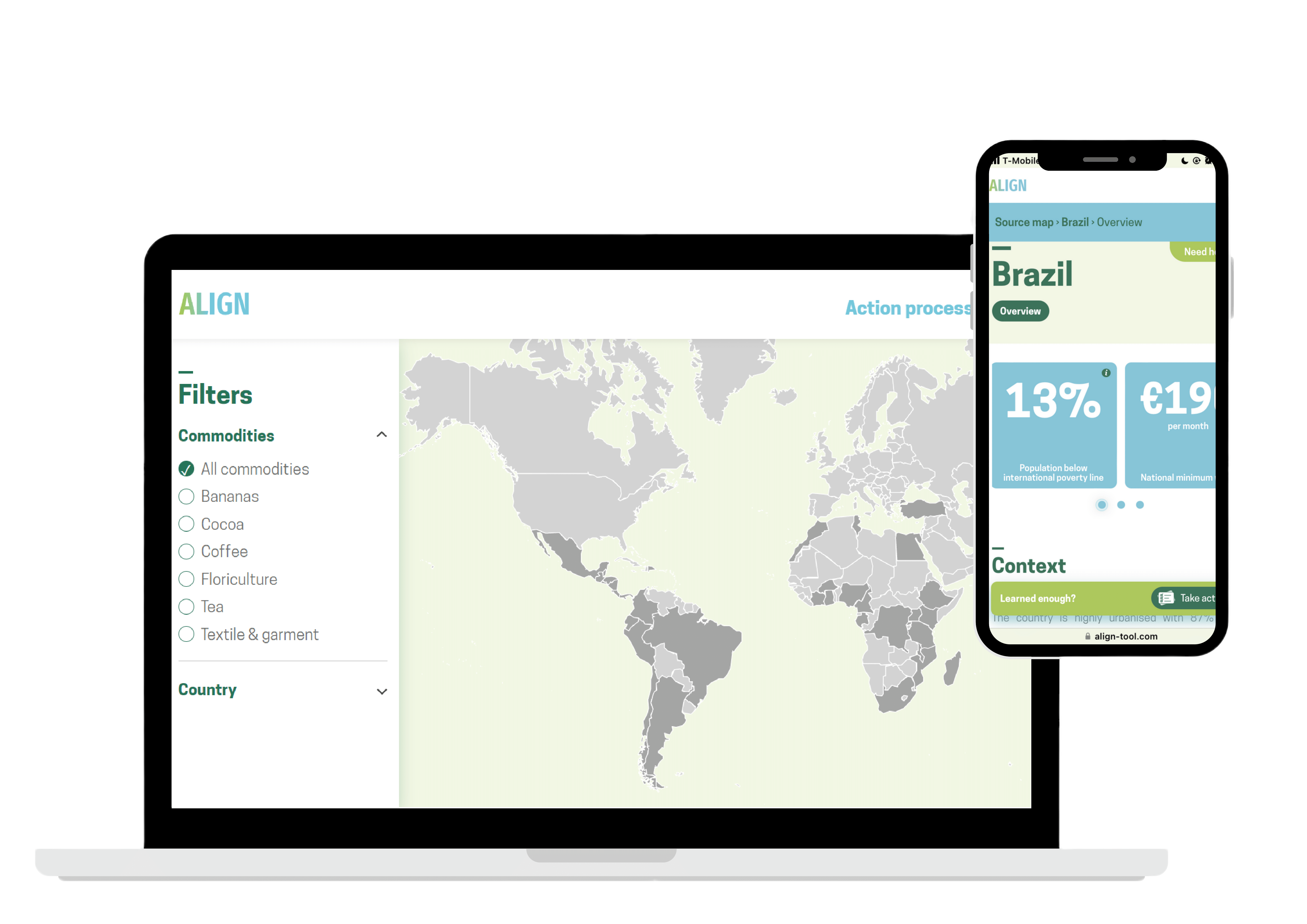Criteria and Glossary
As you explore the country profiles in ALIGN's Source Map, you might come across terms and concepts that need more explanation. More importantly, you might be curious about the methodologies and estimates available in this Benchmark finder. To help you out, the Glossary right below clarifies important terms related to Living Income and Living Wage.
As Living Income and Living Wage become increasingly important, more and more methods for calculating these estimates are being developed. Companies, policymakers, and other interested parties are seeking guidance on how to compare these different methods and use the estimation values effectively. Additionally, recent developments like the European Directive on Corporate Sustainability Due Diligence (CSDDD) have made Living Incomes and Living Wages a required part of due diligence regulations, highlighting the need for clear guidance on these methodologies.
In response, the Technical Advisory Committee of the Living Income Community of Practice, which includes all ALIGN experts on the topic, has discussed and developed quality criteria that these methodologies should meet. This initial version of the criteria was created based on a review of selected Living Income and Living Wage methods.
The document "Guidance Document on Criteria for Methodologies on Living Income and Living Wage Estimates" offers a clear guide to the proposed criteria, focusing on key elements such as a decent standard of living, as well as guidelines for data collection and reporting/comparability.
Glossary
Anker methodology
This one you'll see a lot over here. It refers to a robust and widely accepted methodology for developing Living Wage estimates and assessing the gap with actual wages. The Anker methodology can also be used for developing Living Income estimates, as both Living Wage and Living Income estimates are based on the cost of a basic but decent standard of living for a family. Add a line on the content being publicly available and other reasons why we chose it?
Basic but decent standard of living
A basic but decent standard of living means being able to afford a lowcost and nutritious diet, basic healthy housing, and other essential expenses, including adequate healthcare and education of children through secondary school, and not being at risk of poverty or unaffordable debt due to occasional or unplanned events (marriages, funerals, illnesses, etc.).
Living income
The net annual income required for a family in a particular place to afford a basic but decent standard of living for all members of that family. Elements of a decent standard of living include: food, water, housing, education, healthcare, transport, clothing, and other essential needs including provision for unexpected events.
In ALIGN's Source Map, you'll find estimates developed by the Global Living Wage Coalition and The Living Income Community of Practice, both developed according to the Anker Methodology. For guidance on choosing between different living income estimates and methodologies in your own projects, check the FAQ “Looking for a Living Income Benchmark.” This FAQ offers information on where to find estimates, how to use them, and what to do if estimates are not available.
Living wage
The remuneration received for a standard workweek by a worker in a particular place sufficient to afford a decent standard of living for the worker and her or his family. Elements of a decent standard of living include food, water, housing, education, health care, transportation, clothing, and other essential needs including provision for unexpected events. (Global Living Wage Coalition)
International Poverty Line
The World Bank definition of extreme poverty is set at a global absolute minimum of 2.15 USD per person per day 2017 PPP.
About ALIGN
ALIGN is developed by Fairfood, the Rainforest Alliance and the Sustainable Food Lab, with support from the German Federal Ministry for Economic Cooperation and Development and implemented by GIZ. The platform benefits from the endorsement and contributions of the Living Income Community of Practice, the Global Living Wage Coalition, Fairtrade International and the WageIndicator. It consolidates publicly available data from a range of experts in agricultural economics, income measurement, and livelihoods, focusing on issues relevant to the Global South and the agrifood sector.
